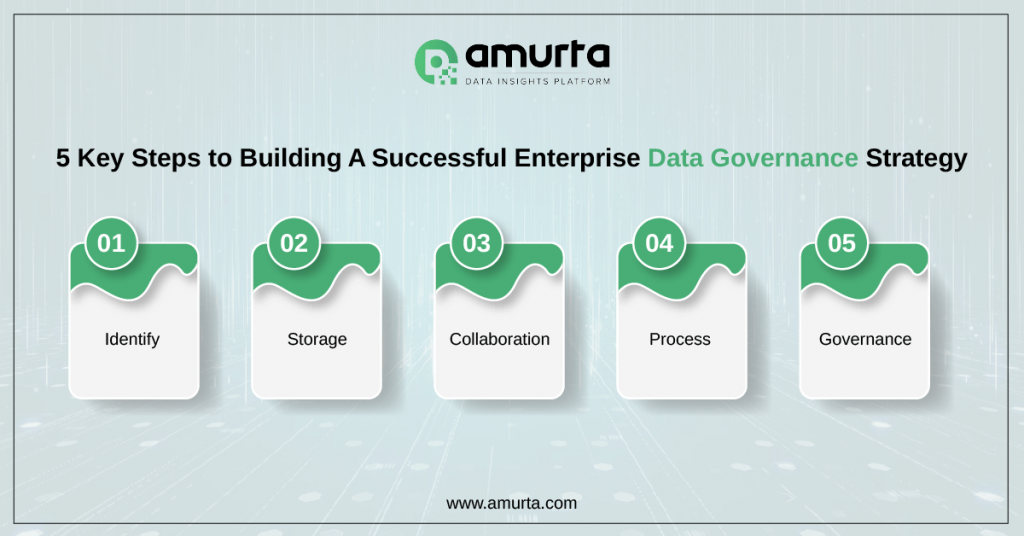All You Need To Know About Building A Successful Enterprise Data Governance Strategy in 5 Steps
Unlimited Data is generated every second through a plethora of sources. Due to the aggressive growth of interconnectedness between companies, devices, and people, there is a tremendous increase in the amount of data from a wide variety of channels. Enterprises aspire that data should be accurate, usable, clean, and secure. Undoubtedly, data if handled strategically, can create a significant and positive effect on present and future businesses and can become a value-adding factor.
Data Governance is all about processes, individuals, and technology that are required to protect and manage enterprise data assets. The main purpose is to ensure completeness, correctness, interpretability, data security, traceability, trustworthiness, and accessibility of enterprise data effectively and efficiently.
By following the criteria of usability, availability, integrity, and security, you can design and develop a successful enterprise data governance strategy. In any enterprise, the compliance department, data stakeholders from business units, information technology, and Data Governance officers help to lead the data governance. One of the vital aspects is to have reliable and consistent data sets that help to evaluate enterprise performance and make sound management decisions.

Building A Successful Enterprise Data Governance Strategy in 5 steps
Identify – It is vital to understand that before implementing any data strategy, you have to identify the origin of the data that can be either structured or unstructured. After identification of the data, you can proceed to clear, manipulation, and storage. Your data has to be catalogued which will help your data have a value, name, defined source, and format.
Storage – Storage space is allocated based on the type of data being processed and how the same data will be used and shared. It also depends on the place regarding how this data will be moved between various departments in the organization. By having a strong data strategy, you can overcome the challenges in sharing and accessing this data in a better way. By having an efficient storage strategy data can be accessed in a better way.
Collaboration – Modern IT has developed many applications that help in sharing the same data in the best way for sound decision-making. You may find some organizational rules that govern the sharing of the data and some do not govern how to share the data between different departments. Sharing the data in the company helps to boost operational efficiency which will ultimately contribute to increased productivity.
Process – Data comes into the company through external or internal sources. Data, when it is in the raw form is of little help to the end-user. The data has to go through a different process such as standardization and transformation, to make it more useful. Complex applications and codes will be deployed to make this process successful. The ultimate aim of this process is to ensure that it can be shared and reused.
Governance– After building the strategy of storing and sharing your data, the next move is to have a set of regulations that will govern how data is handled by the members of the organization. Setting and adopting a data governance framework is one of the challenging tasks. Once the policies are in place, they will help out with what to do during data sharing, naming, and manipulation. Creating a data framework involves all respective departments that share data. In the process of developing a data governance structure, the main focus is that it should not be too complex as it may lead to data being of limited usage.
To know more information about Data Governance, please request a demo to explore Amurta’s Data Insights Platform, the Industry Prime Data Governance Tool by just clicking this link. To know further details and for any queries related to sales and support please feel free to contact us +1 888 840 0098 and you can email us at sales@amurta.com, we will be happy to assist you.




